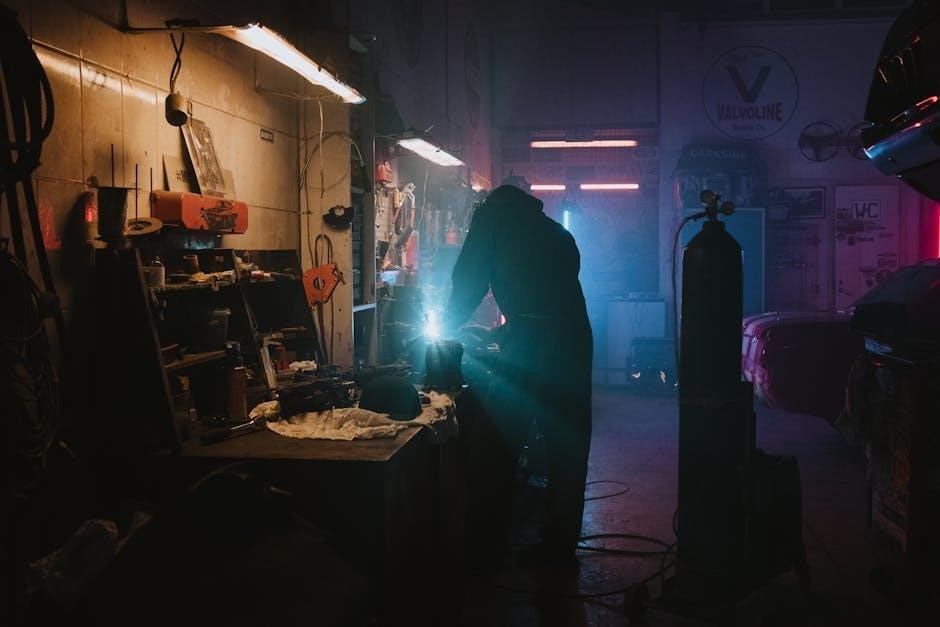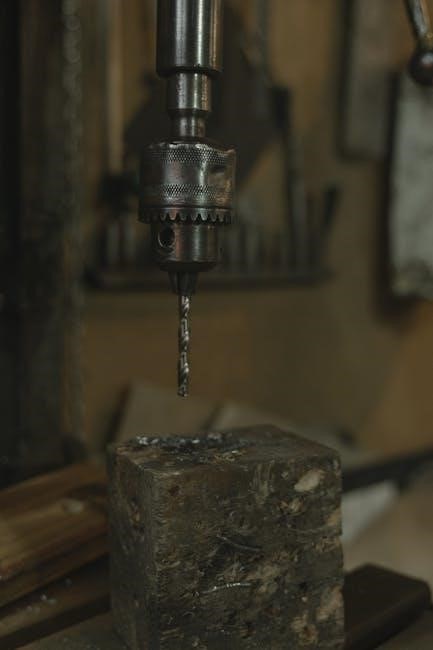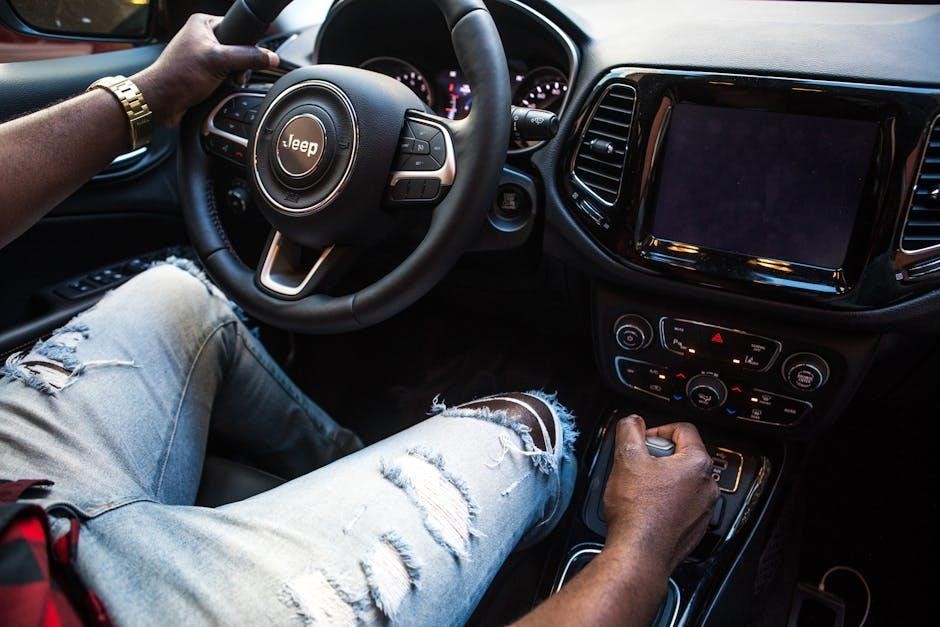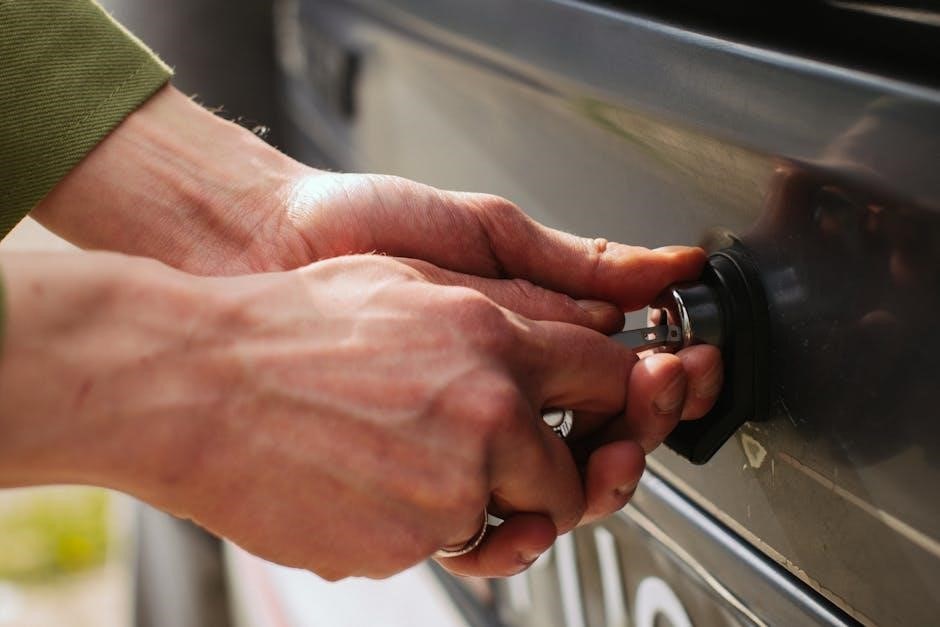
club car owner’s manual
Welcome to the Club Car Owner’s Manual, your comprehensive guide to understanding and maintaining your vehicle. This manual is designed to provide you with essential information to ensure safe and efficient operation. It covers key features, maintenance tips, and troubleshooting guidance. Whether you’re a new owner or a seasoned user, this manual will help you maximize your Club Car’s performance and longevity. Always refer to this guide for proper usage and care to enjoy your vehicle to the fullest. Remember to update your manual as new information becomes available.

Safety Information
Safety is a top priority when operating your Club Car vehicle. This section provides essential guidelines to ensure your well-being and the safety of your passengers. Always take the time to review and understand these precautions before driving your vehicle.
Safety Precautions
- Wear Seat Belts: Ensure all passengers, including the driver, wear seat belts at all times. Seat belts are critical for preventing injuries in the event of sudden stops or accidents.
- Secure Passengers: Make sure all passengers are seated properly and hold on to handholds while the vehicle is in motion. Avoid overloading the vehicle beyond its recommended capacity.
- Avoid Hazardous Terrain: Be cautious when driving on uneven or slippery surfaces. Steep slopes, loose gravel, or wet conditions can increase the risk of losing control.
- Keep Loose Items Secure: Ensure all loose items, such as golf bags or personal belongings, are properly secured to prevent them from shifting during operation.
Pre-Operation Checks
Before starting your Club Car, perform a quick safety inspection to ensure everything is in working order.
- Check Brakes: Test the brakes to ensure they function properly. If you notice any issues, do not operate the vehicle until they are repaired.
- Inspect Tires: Verify that all tires are inflated to the recommended pressure and show no signs of wear or damage.
- Look for Safety Decals: Ensure all safety decals are in place and legible. These decals provide important warnings and operating instructions.
- Check for Damage: Inspect the vehicle for any visible damage or malfunctions, such as cracked windshields, loose parts, or faulty lights.
Safe Driving Practices
Adhering to safe driving practices is crucial for minimizing risks while operating your Club Car.
- Drive at Safe Speeds: Avoid excessive speed, especially in crowded areas or near pedestrians; Always reduce speed when turning or approaching obstacles.
- Be Aware of Surroundings: Keep an eye out for pedestrians, animals, or other vehicles in your path. Use mirrors and look over your shoulder to maintain situational awareness.
- Avoid Distractions: Never use electronic devices or engage in conversations that may distract you from driving safely.
- Follow Traffic Rules: Obey all local traffic laws and regulations, such as stopping at stop signs and yielding to oncoming traffic.
Emergency Procedures
In the unlikely event of an emergency, stay calm and follow these steps:
- Stop the Vehicle: Bring the vehicle to a slow, controlled stop as soon as it is safe to do so.
- Turn Off the Engine: Switch off the ignition and engage the parking brake to prevent accidental movement.
- Assess the Situation: Check for injuries or damage. Provide assistance if needed and contact emergency services if necessary.
- Contact a Technician: If the vehicle is damaged or malfunctioning, do not attempt to drive it. Contact a certified Club Car technician for assistance.
By following these safety guidelines, you can help ensure a safe and enjoyable experience for yourself and your passengers. Always prioritize caution and take the time to familiarize yourself with your Club Car’s safety features and operating instructions.

Vehicle Features and Components
Understanding your Club Car’s features and components is essential for optimal performance and maintenance. This section provides a detailed overview of the key parts of your vehicle, helping you identify and utilize its various systems effectively.
Key Components of Your Club Car
Your Club Car is designed with durability and functionality in mind, featuring a range of components that work together to provide a smooth and reliable driving experience. Below are the primary features and components you should familiarize yourself with:
Frame and Body
The frame is the structural foundation of your Club Car, built to withstand the rigors of regular use. The body is constructed from high-quality materials, such as aluminum or steel, ensuring both strength and corrosion resistance. Regularly inspect the frame and body for any signs of damage or rust.
Suspension and Steering
The suspension system is designed to absorb shocks and provide a comfortable ride. The steering mechanism is engineered for precise control, allowing you to navigate with ease. Ensure the suspension and steering components are maintained according to the manufacturer’s recommendations.
Braking System
The braking system is one of the most critical components of your Club Car. It typically includes a combination of disc brakes and drum brakes, depending on the model. Regularly check the brake pads, fluid levels, and cables to ensure optimal braking performance.
Electrical System
The electrical system powers essential functions such as the motor, lights, and accessories. Key components include the battery, charger, and control panel. Always follow proper charging procedures and avoid overcharging, as this can damage the battery and electrical components.
Motor and Drivetrain
The motor is the heart of your Club Car, delivering the power needed for smooth operation. The drivetrain transfers power from the motor to the wheels. Electric models feature quiet and efficient motors, while gas-powered models provide robust performance for heavier loads.
Additional Features
Modern Club Car vehicles often come with additional features designed to enhance comfort and convenience. These may include:
- Accessories: Custom options like canopies, windshields, and storage compartments can be added to suit your needs.
- Lighting: LED lights provide improved visibility and safety during early morning or evening use.
- Seats and Upholstery: Ergonomic seating and durable upholstery ensure comfort and longevity.
- Customization Options: Personalize your Club Car with paint colors, decals, or upgraded wheels.
Understanding Your Vehicle’s Serial Number
Your Club Car’s serial number is a unique identifier that provides important information about your vehicle, including the model year and production details. The serial number can typically be found on a bar code label located under the glove compartment or on the steering column. Refer to the serial number when ordering parts or contacting customer support for assistance.
By familiarizing yourself with your Club Car’s features and components, you can better appreciate its design and functionality. This knowledge will also help you perform routine inspections and maintenance, ensuring your vehicle remains in peak condition for years to come.

Maintenance and Care
Regular maintenance and proper care are essential to ensure your Club Car remains in optimal condition, providing years of reliable service. This section outlines the key steps and recommendations for maintaining your vehicle, helping you prevent potential issues and extend its lifespan.
Regular Inspections
Start by conducting regular inspections to identify and address any potential issues before they become serious. Check the following components:
- Tires: Ensure proper inflation according to the manufacturer’s specifications. Inspect for wear, cracks, or damage.
- Brakes: Examine brake pads and cables for wear or damage. Test the brakes to ensure they function correctly.
- Battery: For electric models, check the battery water levels (if applicable) and ensure terminals are clean and secure.
- Fluids: For gas-powered models, monitor oil and coolant levels; Refer to your manual for the recommended types of fluids.
- Electrical System: Inspect wires and connections for signs of damage or corrosion.
Cleaning and Protection
Keeping your Club Car clean not only enhances its appearance but also protects it from environmental factors. Use mild soap and water to wash the exterior, avoiding abrasive materials that could damage the finish. For the interior, clean seats and upholstery with appropriate cleaners, ensuring they remain durable and comfortable.
Battery Maintenance
For electric Club Cars, the battery is a critical component. Charge the battery regularly, following the manufacturer’s guidelines to avoid overcharging. If your vehicle is equipped with a lead-acid battery, check the water levels monthly and top them off as needed. Always use distilled water to prevent mineral buildup.
Storage Tips
When storing your Club Car for an extended period, take the following steps to protect it:
- Charge the Battery: Fully charge the battery before storage and reconnect it every 30 days to maintain its health.
- Protect from the Elements: Store the vehicle in a dry, shaded area to prevent exposure to direct sunlight or moisture.
- Cover the Vehicle: Use a breathable cover to protect against dust and debris.
Scheduled Maintenance
Refer to your Club Car Owner’s Manual for a detailed maintenance schedule. Routine services, such as oil changes and filter replacements, should be performed at the recommended intervals. Only use parts and accessories approved by the manufacturer to ensure compatibility and performance.
Professional Assistance
While many maintenance tasks can be performed by the owner, certain repairs and services require professional expertise. Only trained technicians should service or repair complex systems, such as the motor or electrical components, to ensure safety and compliance with warranty terms.
By following these maintenance and care guidelines, you can keep your Club Car in excellent condition, ensuring it continues to perform reliably for years to come. Regular attention to detail and adherence to the manufacturer’s recommendations will help prevent costly repairs and extend the lifespan of your vehicle.

Operating the Vehicle
Operating your Club Car safely and efficiently requires attention to detail and adherence to the guidelines outlined in this section. Whether you are driving a gas-powered or electric model, understanding the proper techniques and precautions will enhance your experience and ensure the longevity of your vehicle.
Before starting your Club Car, perform a quick inspection to ensure everything is in working order:
- Safety Decals and Features: Familiarize yourself with the safety decals and feature identification on your vehicle. Ensure all decals are in place and easy to read.
- Seatbelts: Always wear a seatbelt and ensure all passengers do the same. This is a critical safety precaution to prevent injury.
- Brakes: Test the brakes to confirm they are functioning properly before moving the vehicle.
- Tires: Check tire pressure and ensure it matches the manufacturer’s recommendations for optimal performance and safety.
Starting the Vehicle
The process for starting your Club Car varies slightly depending on whether it is gas-powered or electric:
- Gas-Powered Models: Turn the key to the “on” position, press the pedal gently, and release it once the engine starts. Allow the vehicle to warm up for a few seconds before moving.
- Electric Models: Engage the forward or reverse pedal slowly to begin movement. Avoid sudden acceleration to maintain control.
Driving Tips
Safe and efficient driving practices are essential for enjoying your Club Car:

- Speed Control: Adjust your speed according to the terrain and conditions. Slow down on uneven or slippery surfaces to maintain stability.
- Sharp Turns: Avoid making sharp turns, as this could cause the vehicle to tip. Take wider turns whenever possible.
- Visibility: Always be aware of your surroundings. Use mirrors and check blind spots before changing direction.
- Load Distribution: Ensure passengers and cargo are evenly distributed to maintain balance and prevent instability.
Parking and Shutting Down
When parking your Club Car, choose a flat, stable surface and engage the brake. For electric models, turn the key to the “off” position and disconnect the battery if the vehicle will be stored for an extended period. For gas-powered models, ensure the ignition is turned off and the fuel valve is in the “off” position.
Special Considerations
Be mindful of the following when operating your Club Car:
- Passengers: Only allow the recommended number of passengers to ride in the vehicle. Ensure they are seated properly and holding on while the vehicle is in motion.
- Cargo: Do not overload the vehicle with cargo. Refer to your manual for weight limits and proper loading techniques.
- Weather Conditions: Avoid operating the vehicle in extreme weather, such as heavy rain or snow, unless it is equipped with appropriate features for such conditions.
By following these operating guidelines, you can enjoy a safe and enjoyable experience with your Club Car. Always refer to your Owner’s Manual for model-specific instructions and recommendations.

Troubleshooting Common Issues
Like any vehicle, your Club Car may occasionally encounter issues that require attention. This section is designed to help you identify and resolve common problems quickly and effectively. By addressing these issues promptly, you can ensure your vehicle continues to operate safely and efficiently.
Dead Battery
If your Club Car does not start, the battery may be the culprit. For electric models:
- Check the battery terminals for tightness and corrosion. Clean them if necessary.
- Ensure the battery is fully charged. If it is old or worn out, consider replacing it.
Faulty Charger
If the battery is not charging properly, inspect the charger and its connections:
- Verify that the charger is plugged in and functioning correctly.
- Check the charging port on the vehicle for damage or debris.
Loss of Power
If the vehicle loses power while in use, it could be due to:
- Overloaded Cargo: Ensure the vehicle is not overloaded, as this can strain the motor.
- Low Battery: Check the battery level and recharge if necessary.
- Obstructions: Clear any debris or obstructions that may be affecting the motor or wheels.
Brake Issues
If the brakes are not functioning properly:
- Inspect the brake pads for wear and tear. Replace them if necessary.
- Check the brake fluid level (for gas-powered models) and top it off if needed.
Uneven or Erratic Movement
If the vehicle is moving unevenly or erratically:
- Tire Pressure: Ensure all tires are inflated to the recommended pressure.
- Balance: Check for uneven weight distribution or loose suspension components.
- Obstructions: Remove any foreign objects that may be lodged in the wheels or undercarriage.
Error Codes or Warning Lights
Modern Club Car models may display error codes or warning lights on the touchscreen:
- Refer to your Owner’s Manual for a list of common error codes and their meanings.
- Contact a certified Club Car technician if the issue persists after troubleshooting.
General Tips
Regular maintenance and inspections can prevent many common issues. Always:
- Check the vehicle for proper location of all safety decals and features.
- Refer to your Owner’s Manual for model-specific troubleshooting steps.
- Contact Club Car customer support for assistance with persistent problems.
By addressing these common issues promptly, you can enjoy uninterrupted use of your Club Car. Remember to always follow safety guidelines and consult your manual for detailed instructions.

Accessories and Customization
Customizing your Club Car is an excellent way to enhance its functionality, comfort, and aesthetic appeal. Whether you’re looking to improve performance, add convenience features, or personalize your vehicle’s appearance, there are numerous accessories and customization options available. This section will guide you through the various ways to tailor your Club Car to your needs and preferences.
Roof and Enclosures
A roof or enclosure can provide protection from the elements and enhance your driving experience. Popular options include:
- Sun Canopy: A lightweight roof option ideal for sunny days.
- Full Enclosure: Includes doors and windows for all-weather protection.
- Windshield: Protects you and your passengers from wind and debris.
Seating and Storage
Upgrade your seating and storage options to maximize comfort and versatility:
- Seat Upgrades: Choose from various materials and designs, including premium cushions and ergonomic seats.
- Storage Solutions: Add compartments, baskets, or cargo beds for carrying essentials.
- Rear Seat Kits: Convert your two-seater into a four-seater for added capacity.
Lighting and Electrical
Enhance visibility and functionality with lighting and electrical accessories:
- LED Lights: Improve nighttime visibility with LED headlights, taillights, and underbody lighting.
- Auxiliary Power: Install USB ports or power outlets to keep devices charged on the go.
- Sound Systems: Add a Bluetooth speaker system for an enjoyable driving experience.
Styling and Performance
Personalize your Club Car’s appearance and boost its performance with stylish and functional upgrades:
- Custom Paint and Decals: Give your vehicle a unique look with personalized paint jobs or decals.
- Wheels and Tires: Upgrade to stylish wheels or specialized tires for better traction and stability.
- Performance Enhancements: Improve speed and torque with aftermarket motor upgrades or high-performance batteries.
Environmental Accessories
Eco-friendly accessories can make your Club Car more sustainable:
- Solar Panels: Charge your battery using renewable energy.
- Recycling Containers: Attach bins for collecting recyclables during community cleanups.
Tips for Customization
When customizing your Club Car, keep the following tips in mind:
- Consult the Manual: Ensure all modifications comply with the manufacturer’s guidelines.
- Functionality First: Prioritize practicality to maintain your vehicle’s reliability.
- Start Small: Begin with minor upgrades and gradually add more features.
- Seek Professional Help: For complex modifications, consult a certified technician.
By exploring these accessories and customization options, you can transform your Club Car into a vehicle that perfectly suits your lifestyle and preferences. Always follow the manufacturer’s recommendations to ensure safety and optimal performance.

Warranty Information
Your Club Car is backed by a comprehensive warranty designed to protect your investment and ensure peace of mind. This section outlines the key details of the warranty, including coverage, duration, and exclusions. Understanding your warranty is crucial to maintaining your vehicle and resolving any potential issues promptly.
Warranty Coverage
Club Car offers a limited warranty on new vehicles, covering defects in materials and workmanship for a specified period. The warranty typically includes:
- Vehicle Components: Coverage for electrical, mechanical, and structural components.
- Battery: A separate warranty for the battery pack, ensuring reliability and performance.
- Accessories: Certain accessories and customizations may also be covered under the warranty.
Warranty Duration
The warranty period varies depending on the type of vehicle and usage. For example:
- Residential Use: Typically covers the vehicle for a longer period, such as 4-6 years, depending on the model.
- Commercial Use: May have a shorter warranty period due to heavier usage.
Always refer to your specific warranty agreement for exact terms.
Exclusions and Limitations
While the warranty provides extensive coverage, certain conditions and actions may void it. Common exclusions include:
- Neglect or Misuse: Failure to follow maintenance recommendations or operating guidelines.
- Unauthorized Modifications: Alterations not approved by Club Car can void the warranty.
- Natural Disasters: Damage caused by floods, fires, or other natural events.
- Normal Wear and Tear: Expected degradation of parts like tires and brakes.
Warranty Registration
To ensure your warranty is valid, complete the registration process as outlined in your Owner’s Manual. This typically involves providing your vehicle’s serial number and purchase details to Club Car. Registration helps verify ownership and streamline warranty claims.
Filing a Warranty Claim
If you encounter an issue covered under the warranty, follow these steps:
- Contact an Authorized Dealer: Only Club Car-certified technicians can perform warranty repairs.
- Provide Documentation: Submit proof of purchase, maintenance records, and warranty registration.
- Inspection and Repair: The dealer will assess the issue and complete necessary repairs.
Maintaining Warranty Eligibility
To keep your warranty valid, adhere to the following:
- Follow Maintenance Schedules: Regular servicing ensures optimal performance and warranty compliance.
- Use Genuine Parts: Non-authorized parts may void the warranty.
- Report Issues Promptly: Addressing problems early prevents further damage.
By understanding and adhering to the terms of your Club Car warranty, you can enjoy years of reliable service from your vehicle. Always consult your Owner’s Manual or contact Club Car directly for any warranty-related questions or concerns.

Environmental Considerations
As a responsible owner of a Club Car vehicle, it is important to consider the environmental impact of your usage and maintenance practices. Club Car is committed to sustainability, and this section provides guidance on how to minimize your ecological footprint while enjoying your vehicle.
Energy Efficiency
Club Car vehicles are designed with energy efficiency in mind, particularly the electric models. Electric golf cars produce zero emissions during operation, making them an environmentally friendly choice for both personal and commercial use. To optimize energy efficiency:
- Charge Responsibly: Avoid overcharging your battery, as this can reduce its lifespan and increase energy consumption.
- Use Energy-Saving Features: Many Club Car models come with features like regenerative braking, which helps conserve energy during use.
Battery Maintenance and Disposal
Batteries are a critical component of your Club Car, and proper handling is essential for environmental protection. Lead-acid batteries, commonly used in golf cars, contain hazardous materials that require careful disposal;
- Recycle Batteries: Do not dispose of batteries in regular trash. Take them to a certified recycling center or an authorized Club Car dealer.
- Follow Maintenance Guidelines: Regularly check and maintain your battery to ensure it operates efficiently and lasts longer.
Use of Recyclable Materials
Club Car vehicles are constructed with recyclable materials wherever possible. When your vehicle reaches the end of its lifecycle, consider recycling its components to reduce waste. Many parts, such as aluminum and steel, can be recycled, helping to conserve natural resources and reduce landfill use.
Noise Reduction
Electric Club Car vehicles are significantly quieter than gas-powered alternatives, reducing noise pollution and making them ideal for use in residential areas, parks, and nature reserves. This feature not only benefits the environment but also enhances the overall user experience.
Eco-Friendly Practices
To further reduce your environmental impact, adopt eco-friendly practices in your daily use of the vehicle:
- Limit Unnecessary Use: Plan your trips efficiently to minimize unnecessary travel and energy consumption.
- Maintain Proper Tire Pressure: Correct tire pressure improves energy efficiency and reduces wear, which in turn reduces waste.
- Avoid Polluting Activities: Do not dispose of waste or chemicals near charging stations or while operating the vehicle.
Club Car’s Commitment to Sustainability
Club Car is dedicated to producing vehicles that align with global sustainability goals. By choosing a Club Car, you are supporting a company that prioritizes environmental responsibility through innovative design and manufacturing processes.
By following these environmental considerations, you can enjoy your Club Car while contributing to a cleaner, greener future. Always refer to your Owner’s Manual for specific recommendations tailored to your vehicle model.
Congratulations on completing your journey through the Club Car Owner’s Manual! This guide has equipped you with the knowledge to safely operate, maintain, and enjoy your vehicle to its fullest potential. Whether you’re using your Club Car for recreation, work, or transportation, following the guidelines outlined in this manual will ensure a smooth and enjoyable experience.
Final Tips for a Great Ownership Experience
To make the most of your Club Car ownership, keep these final tips in mind:
- Read and Reference This Manual Regularly: Familiarize yourself with the contents of this manual, as it contains valuable information for every situation. Refer to it whenever you have questions or need guidance.
- Perform Regular Maintenance: Consistent upkeep is key to extending the life of your vehicle. Schedule regular check-ups and address any issues promptly to avoid costly repairs.
- Drive Safely and Responsibly: Always follow safety guidelines and local regulations. Ensure all passengers are seated and holding on while the vehicle is in motion.
- Explore Accessories and Customization: Personalize your Club Car to suit your needs. Whether it’s adding storage solutions or upgrading your seats, accessories can enhance functionality and comfort.
- Stay Informed About Updates: Club Car periodically releases updates and improvements. Stay connected with the manufacturer or your local dealer to learn about new features or recalls.
- Enjoy the Ride: Your Club Car is more than just a mode of transportation—it’s a way to explore, connect, and create memories. Take pride in your ownership and make the most of every journey!
A Final Word on Environmental Responsibility
As you enjoy your Club Car, remember the importance of environmental stewardship. Electric models, in particular, offer a sustainable alternative to traditional gas-powered vehicles. By following proper charging and maintenance practices, you can minimize your ecological footprint.
Warranty and Support
Your Club Car is backed by a comprehensive warranty and dedicated customer support. If you encounter any issues or have questions, reach out to your local dealer or Club Car’s customer service team for assistance.